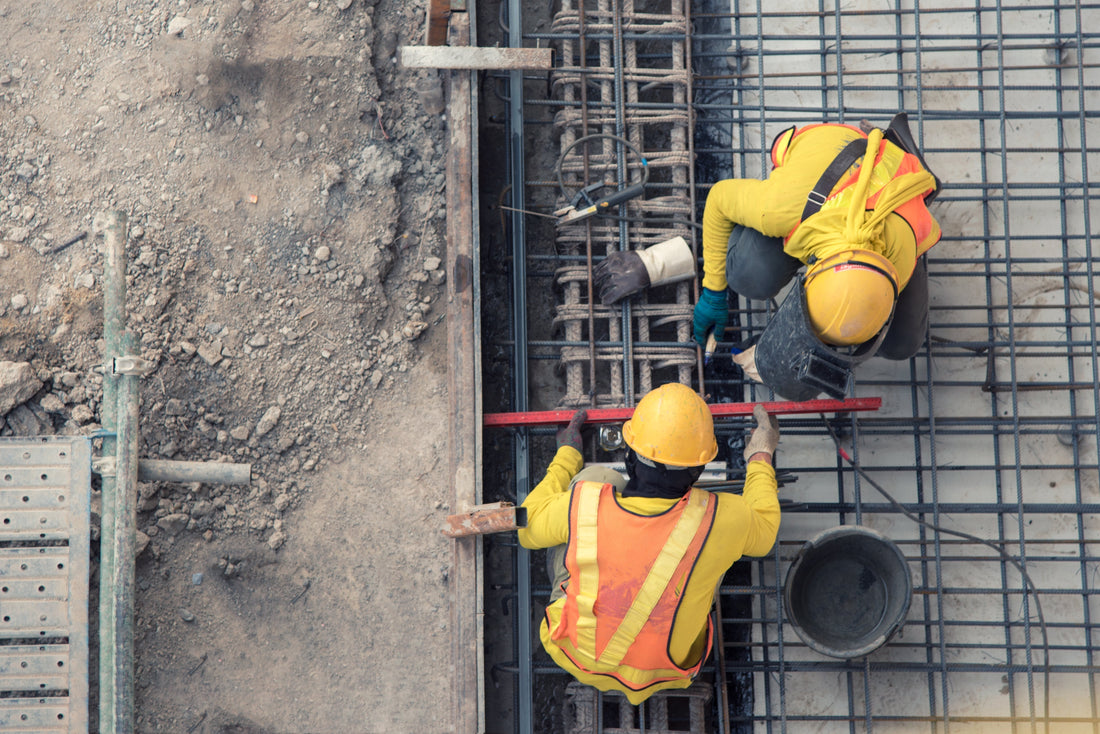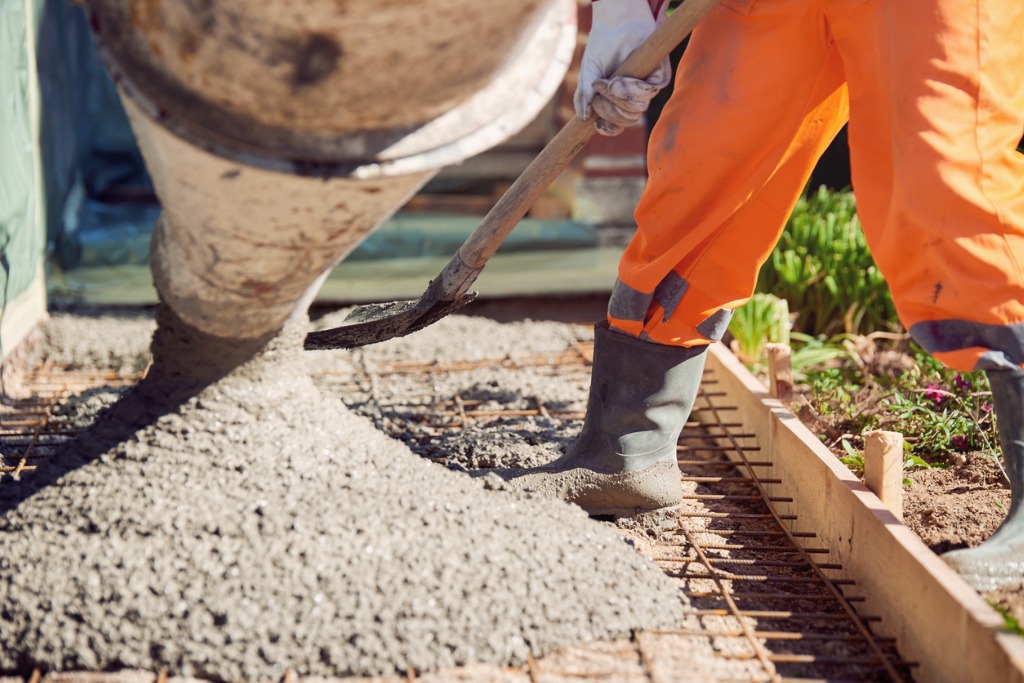The overlooked techniques a Phoenix Concrete Contractor uses to enhance concrete aesthetics
Everything about Concrete: Necessary Providers for Residential and Commercial Construction
Concrete is an essential component in the building and construction industry, offering both commercial and property needs. Its special structure offers stamina and durability, making it suitable for numerous applications. From fundamental job to decorative surfaces, concrete plays a significant function in improving structural honesty and visual allure. There are lots of subtleties to ponder when working with this functional product. The exploration of its vital services reveals a lot more than satisfies the eye.
Comprehending the Basics of Concrete
Concrete, a basic product in construction, is made up of a blend of cement, water, aggregates, and additives. This versatile substance is understood for its adaptability, toughness, and toughness, making it a favored choice for various applications. The cement functions as a binding representative, while aggregates offer mass and strength. Water is necessary for the hydration process, which changes the mix into a strong mass. Additives can customize the properties of concrete, such as setting time and workability, enabling tailored remedies to specific task demands.
Concrete can be cast right into different sizes and shapes, making it suitable for every little thing from walkways to skyscrapers. Its capacity to endure compressive forces makes it suitable for architectural elements. Its thermal mass contributes to power efficiency in buildings. Understanding these fundamental elements of concrete is crucial for anybody associated with the building and construction market, as it prepares for successful task execution.

Necessary Concrete Services for Foundations
Structures play a considerable function in the security and durability of any type of framework, and concrete solutions are basic in their building and construction. A trustworthy concrete foundation guarantees that the weight of the building is equally dispersed, decreasing the threat of shifting or clearing up. Essential solutions include site prep work, where the ground is graded and compressed to develop a strong base. Concrete putting complies with, utilizing high-quality materials to develop a long lasting slab or grounds created to endure different environmental conditions.
Reinforcement, commonly with steel rebar, adds toughness to the structure, protecting against fractures and structural failings. Correct treating methods are also important, permitting the concrete to accomplish its optimal stamina with time. In addition, waterproofing steps can be implemented to secure versus moisture invasion, which is essential for maintaining the honesty of the foundation. These essential concrete solutions jointly add to a durable foundation, creating the backbone of any kind of successful construction task.
Driveway Setup and Maintenance Options
In the domain of driveway installment, various products such as concrete, asphalt, and gravel supply distinct benefits and visual appeals. Comprehending these alternatives is crucial for house owners looking for longevity and charm. In addition, implementing efficient upkeep approaches can significantly extend the life-span and functionality of a driveway.

Kinds Of Driveway Materials
Driveways function as crucial pathways for automobiles, and the choice of products significantly affects their upkeep, durability, and look demands. Common driveway materials consist of concrete, asphalt, gravel, pavers, and bricks. Concrete driveways are known for their stamina and longevity, while asphalt provides flexibility and a smooth surface. Crushed rock driveways are affordable and very easy to install, giving excellent drain but calling for more upkeep. Pavers and bricks use aesthetic allure and adaptability in layout, but they can be a lot more labor-intensive to set up. Each material has special features that deal with different preferences and budget plans, making it essential for home owners and home builders to meticulously consider their options when choosing driveway materials for industrial or domestic jobs.
Maintenance Tips for Resilience
Picking the appropriate materials for driveways is just the start; reliable maintenance is essential for ensuring their long life and performance. Routine cleansing is crucial, as debris, oil, and dust can weaken the surface. Property owners need to take into consideration securing their concrete driveways every few years to shield versus moisture seepage and freeze-thaw cycles. Splits need to be attended to without delay; little crevices can swiftly broaden if left without treatment. Furthermore, it is recommended to prevent hefty loads and sharp things that can harm the surface area. Mounting appropriate drainage systems can prevent water accumulation, which is critical for preserving structural honesty. Periodic inspections assist recognize possible issues early, enabling for timely repair services and extending the driveway's lifespan considerably.
Decorative Concrete Finishes for Aesthetic Appeal
While lots of associate concrete largely with functionality, attractive concrete surfaces have actually become a preferred selection for enhancing aesthetic allure in numerous construction tasks. Phoenix Concrete Contractor. These surfaces change regular concrete right into aesthetically striking surfaces, ideal for both property and commercial applications. Strategies such as marking, staining, and polishing permit a range of shades, textures, and patterns, enabling developers to simulate all-natural materials like stone or wood
Amongst the different choices, stamped concrete offers a cost-efficient way to achieve elaborate designs, while acid staining includes deepness and vibrancy to surfaces. Refined concrete, on the various other hand, uses a smooth, contemporary look, perfect for contemporary areas. Furthermore, subjected accumulation finishes can display vivid rocks, adding a special touch to outdoor areas. Overall, decorative concrete coatings not only boost the visual allure of spaces however also add to the sturdiness and long life of concrete surfaces in a trendy fashion.
Concrete Repair and Reconstruction Methods
Resolving concerns of wear, damages, or damage in concrete surface areas is crucial for keeping architectural stability and aesthetic appeal. Numerous concrete repair work and remediation methods are used to recover surface areas to their initial problem. Split securing is an usual method, entailing making use of specialized products to load and protect against more damages. For much more considerable repair work, epoxy shot can be made use of to bond and strengthen fractured areas. Surface spalling usually requires resurfacing, where a brand-new layer of concrete is applied to boost longevity and look. In addition, concrete overlays supply an effective service for recovering worn surfaces while providing design versatility. In cases of extreme wear and tear, total substitute may be essential. Appropriate analysis and prompt treatment are essential in identifying one of the most efficient fixing technique, therefore extending the lifespan of concrete structures and making sure safety and security for industrial and household applications.
Environmental Considerations in Concrete Building
Environmental factors to consider play a vital function in contemporary concrete building and construction techniques. Emphasizing lasting product choices, efficient waste administration techniques, and techniques for carbon impact reduction can considerably enhance the eco-friendly influence of building and construction jobs. As the sector progresses, resolving these elements becomes progressively vital for advertising sustainability.
Lasting Product Options
As the building and construction sector progressively prioritizes sustainability, the exploration of sustainable material alternatives in concrete building has actually acquired significant focus. Traditional concrete blends normally rely on Portland cement, which has a significant carbon impact. Alternatives such as fly ash, slag concrete, and recycled concrete aggregates are being used to lower environmental effect. Furthermore, bio-based admixtures and innovative strategies like carbon capture and application are arising, additionally enhancing the sustainability of concrete. These products not only decrease waste but additionally enhance the performance and toughness of concrete frameworks. By including sustainable alternatives, the building sector can add to a round economic situation, lower greenhouse gas discharges, and promote accountable resource administration while fulfilling the growing demand for environment-friendly structure practices.
Waste Monitoring Practices
Properly taking care of waste is vital in concrete construction, where considerable materials can be shed during manufacturing and demolition processes. Implementing durable waste management practices not just saves sources however also lessens environmental influence. Reuse and recycling of concrete particles are crucial methods, allowing the healing of accumulations for new blends. Furthermore, proper sorting of products at job websites can minimize contamination and rise recycling prices. Utilizing lean construction methods even more enhances effectiveness by enhancing material use and decreasing excess waste. Education and training of employees in reliable waste administration methods guarantee adherence to standards, cultivating a society of sustainability. Generally, these techniques add to an extra eco responsible strategy in the concrete market, supporting both business and domestic Phoenix Concrete Contractor projects.

Carbon Impact Reduction
Waste monitoring techniques established the stage for addressing the carbon impact related to concrete building and construction. The production of concrete is recognized to generate considerable greenhouse gas discharges, largely from cement manufacturing. To alleviate this impact, numerous methods have actually emerged. Utilizing alternate products, such as recycled accumulations and industrial by-products like fly ash, helps in reducing reliance on standard concrete. Moreover, innovations in concrete solutions, consisting of the growth of low-carbon and carbon-absorbing concrete, add to sustainability objectives. Applying energy-efficient practices in blending and healing procedures also plays a necessary role. In addition, optimizing transport logistics lessens discharges connected with delivering concrete. By embracing these actions, the construction sector can especially decrease its carbon impact while advertising eco-friendly methods.
Often Asked Inquiries
How Much Time Does Concrete Require To Heal Completely?
Concrete commonly takes 28 days to cure entirely, reaching its ideal toughness (Phoenix Concrete Contractor). First setting happens within hours, and it can support light loads after a few days, depending on ecological problems and blend make-up.

Can I Pour Concrete in Winter?
Yes, concrete can be put in cool weather condition, yet preventative measures are essential. Appropriate insulation, utilizing warm water, and additives can aid guarantee adequate healing and avoid freezing, which may jeopardize the honesty of the concrete.
What Is the Average Life-span of Concrete Structures?
The average life-span of concrete structures normally varies from 30 to 100 years, depending upon aspects such as ecological problems, maintenance techniques, and the top quality of materials used in construction.
Is Concrete Recyclable After Demolition?
Yes, concrete is recyclable after demolition - Phoenix Concrete Contractor. It can be crushed and repurposed for different applications, such as brand-new construction, road base, and landscape design. This procedure assists minimize waste and conserves all-natural resources
How Do I Choose the Right Contractor for Concrete Job?
To select the right professional for concrete work, one ought to verify credentials, evaluate past jobs, checked out testimonials, and acquire multiple quotes. Clear communication about job expectations and timelines likewise plays a crucial function in the choice procedure.
Concrete, a basic material in building and construction, is made up of a mixture of concrete, water, aggregates, and additives. While many associate concrete primarily with capability, ornamental concrete coatings have emerged as a popular selection for enhancing visual allure in different building jobs. As the construction industry significantly prioritizes sustainability, the expedition of sustainable product alternatives in concrete building and construction has obtained significant focus. Properly handling waste is important in concrete building and construction, where significant products can be shed during manufacturing and demolition processes. Innovations in concrete formulations, consisting of the growth of carbon-absorbing and low-carbon concrete, add to sustainability objectives.